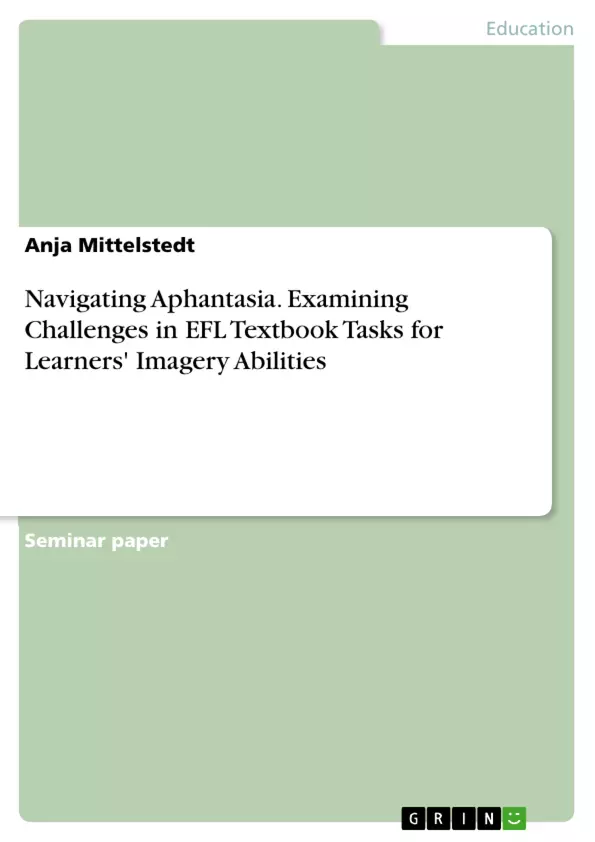In this paper, I look at four textbooks that are used in secondary schools in Brandenburg, Germany, and examine the extent to which tasks: 1. rely on mental imagery, and 2. offer alternative strategies. In the end, if necessary, I will suggest adjustments to the tasks that take into account more of the spectrum of neurodiversity found in language learners.
Aphantasia is a condition that describes people who cannot voluntarily conjure images in their minds. Since Zeman described it in 2015, mental imaging extremes have received more attention. It has not yet been shown in more than anecdotal evidence, how the inability to form mental images influences language learning, but considering the visual dominance of Western
society, and our school systems especially, it stands to reason that aphantasics and people with limited mental imagery capabilities could be negatively impacted.
Inhaltsverzeichnis (Table of Contents)
- 1. Introduction
- 2. Theoretical Background
- 2.1. Aphantasia and Mental Imagery
- 2.2. Strategies for Teaching Vocabulary and Literature in the EFL Classroom
- 3. Task Analysis
- 3.1. Methodology
- 3.1.1. Textbooks and Procedure
- 3.1.2. Analysis
- 3.1.3. Results
- 3.1. Methodology
- 4. Conclusion
Zielsetzung und Themenschwerpunkte (Objectives and Key Themes)
This paper aims to analyze how EFL textbooks cater to learners with limited or no mental imagery capabilities, specifically focusing on tasks related to vocabulary acquisition and literature comprehension. The analysis explores the extent to which these tasks rely on mental imagery and whether they provide alternative strategies for learners who struggle with visualization.
- Aphantasia and the impact of mental imagery on language learning
- The role of mental imagery in EFL textbook tasks
- The need for diverse approaches to teaching vocabulary and literature
- Analysis of textbook tasks for their mental imagery bias
- Suggestions for adjustments to EFL textbook tasks to accommodate neurodiversity
Zusammenfassung der Kapitel (Chapter Summaries)
- Chapter 1: Introduction
This chapter introduces the concept of aphantasia, the inability to voluntarily conjure mental images, and explores its potential implications for language learning. The chapter emphasizes the visual dominance of Western cultures and educational practices, questioning the assumption that all learners possess strong mental imagery abilities.
- Chapter 2: Theoretical Background
This chapter delves deeper into the understanding of aphantasia and its historical context within philosophy and psychology. It examines research on mental imagery, tracing its evolution from ancient Greek concepts to contemporary investigations. The chapter also highlights the significance of mental imagery in memory and learning processes.
- Chapter 3: Task Analysis
This chapter outlines the methodology used for analyzing EFL textbook tasks. The chapter details the selection of textbooks, the procedure for analysis, and the specific criteria used to assess the tasks' reliance on mental imagery and their provision of alternative strategies.
Schlüsselwörter (Keywords)
The paper focuses on the key terms and concepts of aphantasia, mental imagery, EFL textbook tasks, vocabulary acquisition, literature comprehension, neurodiversity, and inclusive teaching practices. The research investigates the influence of mental imagery abilities on language learning and explores ways to adapt EFL textbook tasks to better accommodate learners with diverse cognitive abilities.
- Quote paper
- Anja Mittelstedt (Author), 2023, Navigating Aphantasia. Examining Challenges in EFL Textbook Tasks for Learners' Imagery Abilities, Munich, GRIN Verlag, https://www.hausarbeiten.de/document/1417051


